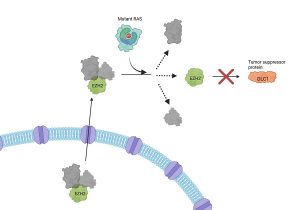Endurance exercise affects all tissues of the body, even those not normally associated with movement

Media Advisory
Wednesday, May 1, 2024
NIH-funded project in rats also finds widespread differences between male and female organisms.
What
A large research project in young adult rats has found that that all bodily tissues tested respond to exercise training, amounting to over 35,000 biological molecules that respond and adapt to endurance exercise over time, including tissues from organs not usually associated with exercise. Researchers also found differences in responses between male and female rats that were more widespread than anticipated, highlighting the importance of including animals of both sexes in pre-clinical research. The effort, funded by the National Institutes of Health (NIH), used data from thousands of analyses of 19 tissue types and identified molecular changes in genes, proteins, and metabolites, which are substances essential to the metabolism of a particular organism or to a particular metabolic process. The findings are published in a group of papers in Nature.
While molecular changes were seen in all tissues, the way in which each tissue responded was unique. For example, effects on the functions of mitochondria, which are cellular hubs for energy production and metabolism, were observed across the body yet the specific changes observed differed depending on the tissue. For example, researchers found that mitochondria in the adrenal gland responded substantially to endurance training, including a change in regulation of nearly half the mitochondria-associated genes. This was surprising as adrenal glands had not been explored in detail for their role in exercise previously.
Additionally, differences were found in molecular responses to endurance exercise between young male and female rats in most tissues tested, including the brain, adrenal gland, lung, and fat tissue. Scientists uncovered striking differences in responses between the sexes in white fat tissue, findings that may play a role in researching how exercise interventions could be recommended for men or women experiencing conditions such as obesity. The differences between the exercise responses of the sexes in humans or animals have not been well characterized, and these findings emphasize the need for inclusion of both sexes in future exercise research to fully understand its role in health.
By tracking exercise’s impact on biological molecules in humans and rats, scientists are creating a map of molecular changes in the body following exercise. Studies in rats allow for a wider range of tissue types to be analyzed compared to human studies, and the resulting knowledge will allow a variety of hypotheses to be explored and guide the researchers in their analysis of the human data.
Researchers are currently conducting an exercise study in humans that will enhance our understand of why the body responds to exercise and how much the response varies for people of different ages, sexes, body compositions, and fitness levels. In the long-term, these insights could make it possible for clinicians to recommend specific, personalized exercise regimens to their patients to treat or prevent a variety of ailments and health conditions.
NIH’s Molecular Transducers of Physical Activity Consortium (MoTrPAC), launched in 2016 to uncover how exercise improves and maintains our health at the molecular level, is funded by the NIH Common Fund and overseen in collaboration with the National Institute on Aging , the National Institute of Arthritis and Musculoskeletal and Skin Diseases, and the National Institute of Diabetes and Digestive and Kidney Diseases. For a list of current projects, visit https://commonfund.nih.gov/MolecularTransducers/fundedresearch. For more information on adult and pediatric clinical studies, visit clinicaltrials.gov under NCT03960827 and NCT04151199or visit the recruitment webpage to learn more about how you can participate.
The data produced through this research project is publicly available for further analysis and direct download to encourage more hypotheses from the biomedical community.
Who
Concepcion Nierras, Ph.D., Office of the Director, Office of Strategic Coordination
Reference
MoTrPAC Study Group. ‘Temporal dynamics of the multi-omic response to endurance exercise training’ Nature 2024. DOI number: 10.1038/s41586-023-06877-w
About the NIH Common Fund: The NIH Common Fund encourages collaboration and supports a series of exceptionally high-impact, NIH-wide programs. Common Fund programs are managed by the Office of Strategic Coordination in the Division of Program Coordination, Planning, and Strategic Initiatives in the NIH Office of the Director in partnership with the NIH Institutes, Centers, and Offices. More information is available at the Common Fund website: https://commonfund.nih.gov.
About the National Institutes of Health (NIH):
NIH, the nation’s medical research agency, includes 27 Institutes and Centers and is a component of the U.S. Department of Health and Human Services. NIH is the primary federal agency conducting and supporting basic, clinical, and translational medical research, and is investigating the causes, treatments, and cures for both common and rare diseases. For more information about NIH and its programs, visit www.nih.gov.
NIH…Turning Discovery Into Health®








